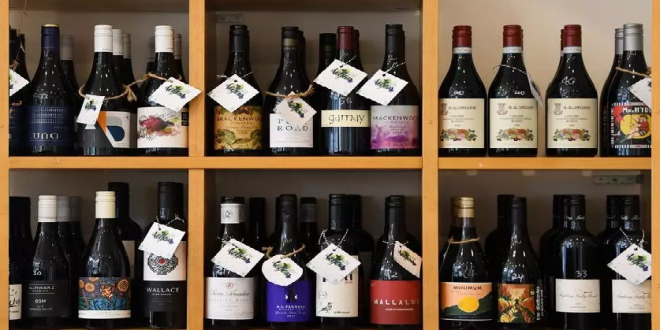27-04-2024
PARIS: Global wine consumption fell to its lowest level since 1996 last year as inflation sent prices to record highs, deterring consumers already facing lower spending power, the International Organization for Vine and Wine (OIV) said on Thursday.
The Paris-based OIV estimated world wine consumption in 2023 at 221 million hectoliters (mhl), down 2.6% from 2022, and 7.5% below 2018. A hectoliter is the equivalent of 133 standard wine bottles.
 Geopolitical tensions, particularly the war in Ukraine, and subsequent energy crises, along with disruptions in the global supply chain, resulted in higher production and distribution costs, which, in turn, led to significant price increases for wine consumers, dampening overall demand, the OIV said.
Geopolitical tensions, particularly the war in Ukraine, and subsequent energy crises, along with disruptions in the global supply chain, resulted in higher production and distribution costs, which, in turn, led to significant price increases for wine consumers, dampening overall demand, the OIV said.
The fall in demand last year was particularly big in China, estimated at minus 25%.
While Chinese wine consumption had risen sharply at the start of the century in line with a growing middle class, it shed more than 60% over the past five years to 6.8 mhl due to COVID-19 restrictions and price pressures which tend to have a bigger effect on younger markets like China, OIE Director General John Barker told reporters.
In terms of trade, the total volume of wine exchanges dropped 6.3% to 99 mhl, but only 4.7% in value to 36 billion euros ($38.6 billion) as the average price of a liter of wine hit a record high, OIV said.
OIV further lowered its estimate for last year’s wine production to 237 mhl from an initial mid-range estimate of 244 mhl released last November, now 10% below the 2022 output and the lowest in more than 60 years.
The sharp decline is due to poor weather, including early frost, heavy rainfall and drought, coupled with widespread fungal diseases in both the Northern and Southern Hemispheres.
Italy produced its lowest wine vintage since 1950 at 38.3 mhl, down more than 23% on the previous year, thereby losing its loses wine-making leadership to France.
For 2024, preliminary estimates for the Southern Hemisphere pointed to a rebound in the two largest producers Australia and Argentina after a sharp drop last year but they would remain 4% and 6% respectively below the 2018/23 average.
 A cold spring and late harvesting would lead Chile to produce less wine for a third consecutive year, down 17% on average.
A cold spring and late harvesting would lead Chile to produce less wine for a third consecutive year, down 17% on average.
Wine is one of the most popular alcoholic beverages consumed in the world today but the market is changing. E-commerce, while still small received a large boost during the pandemic that seems here to stay. Like with broader food and beverage trends, consumers are increasingly interested in wines that align with their ethics and environmental principles. Despite new trends, the old wold is still the center of the market. France, Italy, and Spain are still the leading wine-producing and wine-exporting countries. Other notable wine-producing regions in the world include the United States, Australia, South Africa, Germany, Argentina, and Chile.
The global indicator ‘Revenue, Combined’ in the ‘Wine’ segment of the alcoholic drinks market was forecast to continuously increase between 2024 and 2028 by in total 84.6 billion U.S. dollars (+23.94 percent). After the eighth consecutive increasing year, the indicator is estimated to reach 438 billion U.S. dollars and therefore a new peak in 2028.
Significant fluctuations are estimated for all segments over the forecast period for the indicator. Concerning the two selected segments, the segment Out of home, value share has the largest indicator with 51.1 percent. Contrastingly, At home, value share is ranked last, with 48.9 percent. Their difference, compared to out of home, value share, lies at 2.2 percentage points. (Int’l News Desk)
 Pressmediaofindia
Pressmediaofindia




